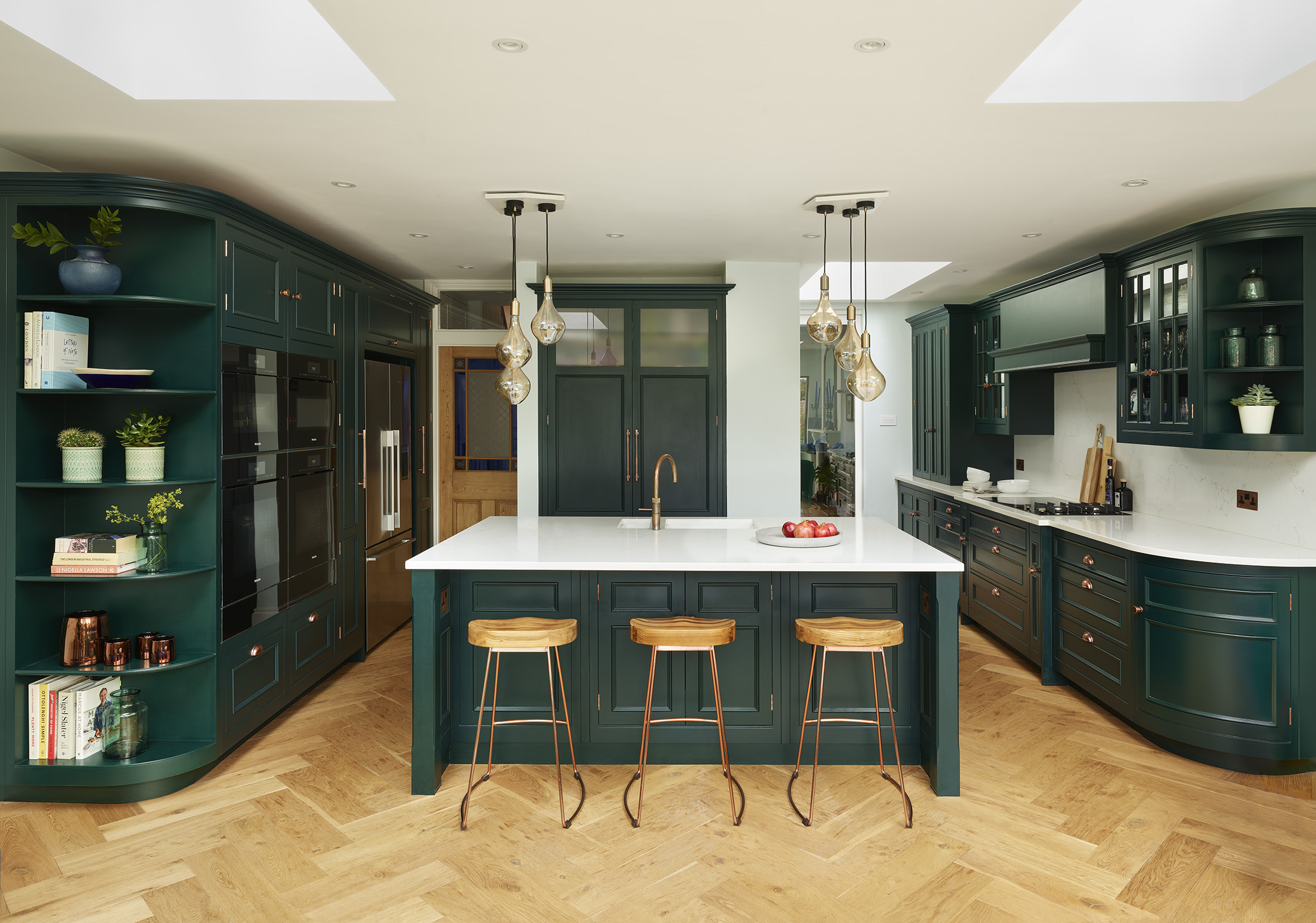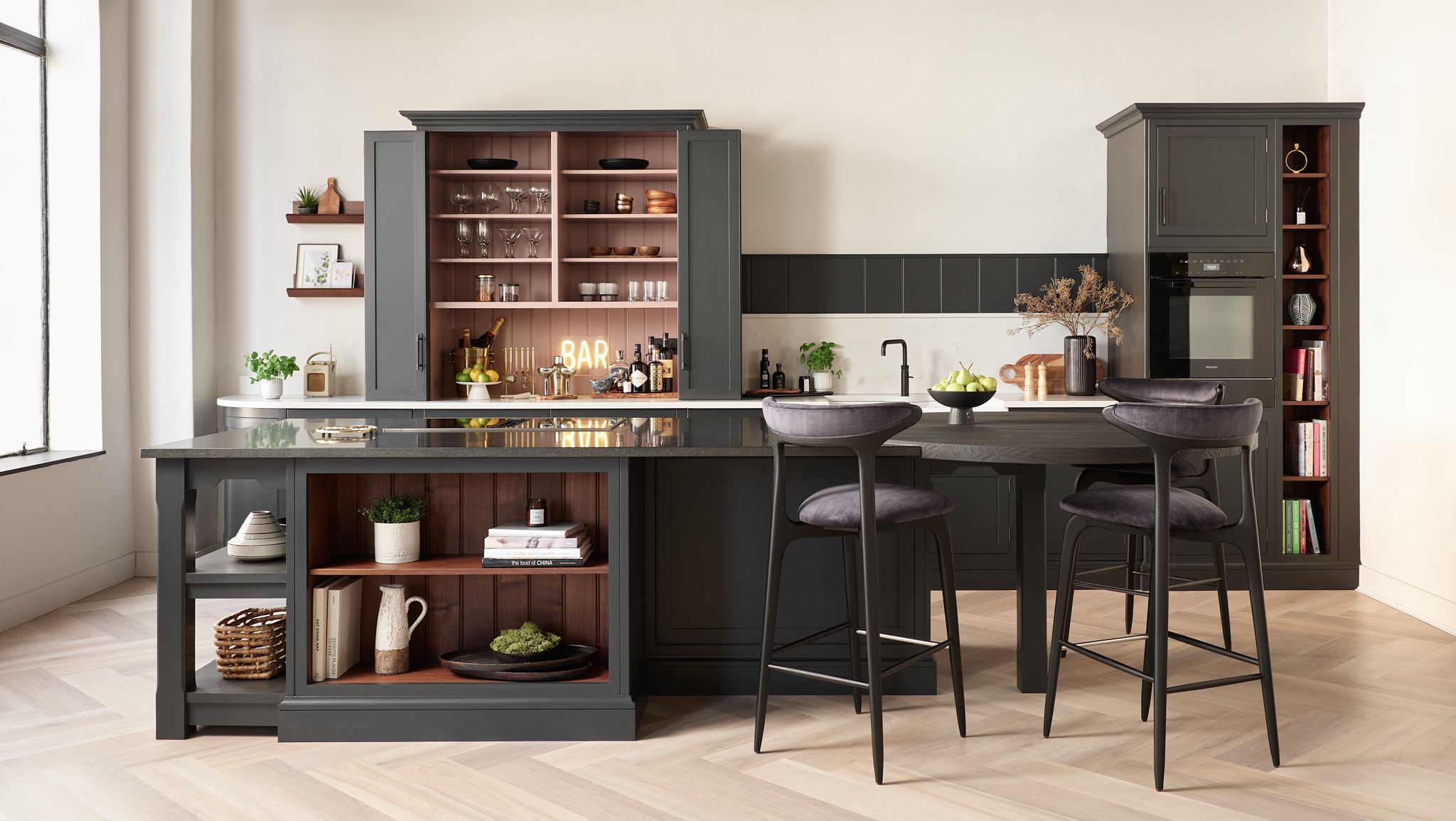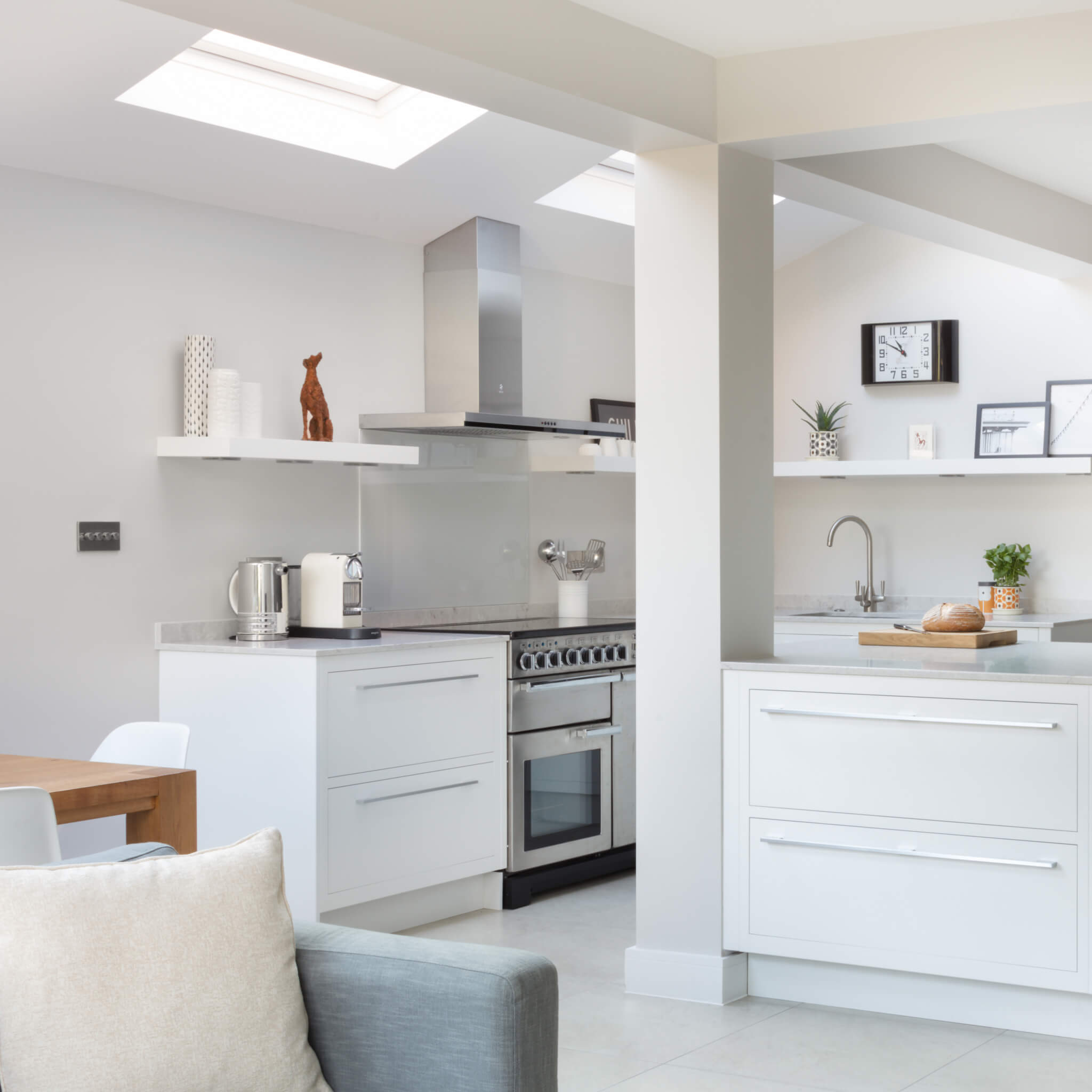
We’ve been in love with multi-functional rooms for a while now. As more and more of us open up our downstairs from a collection of small cramped rooms into one huge space though, the problems as well as the benefits of this kind of living can become obvious. One room zoned into specific areas for cooking, dining and relaxing appears to be a dream but is the reality somewhat different?
Why choose an open plan kitchen design?
Knocking through rooms – often the under-used dining space into a smaller kitchen – can bring light and openness, creating a fluidity that gels well with our super-connected sociable lifestyles. For multi-functional rooms that include a kitchen, the benefits are clear. It prevents the cook from feeling isolated for a start. No more retiring to the kitchen for half an hour on your own to prepare meals. A bespoke kitchen scheme that includes an island or peninsula that looks out onto the rest of the space means that cooking and preparing food need no longer be a solitary process. Often given as a reason for going open plan is the need to keep an eye on children. From toddlers playing to teens doing their homework, for busy families a space that performs several functions allows the family to spend time together even when they’re performing many different tasks.
At a time when homes are getting smaller and space is becoming more valuable, a room allocated just for formal dining can seem an extravagance, while a well-designed kitchen-diner allows you to prepare, cook and eat in the one room comfortably. However, you do have to be canny when planning a multi-functional room to ensure all zones work well together and recognize that this kind of layout will reduce privacy, particularly if you’re opening up the whole of your downstairs. Having nowhere quiet to retire while the kids watch TV or play can become a problem. There are also the issues of noise from appliances that might disturb you or that clearly evident pile of washing-up nagging at you as you sit down for an evening of TV or a quiet read with your favourite book or magazine. Fewer walls also mean less space to put furniture, which can lead to a room that’s crammed around the walls or jumbled in the centre.
So, if you want to open up the space but you’re concerned about some aspects, the latest trend of broken-plan living might well be for you.
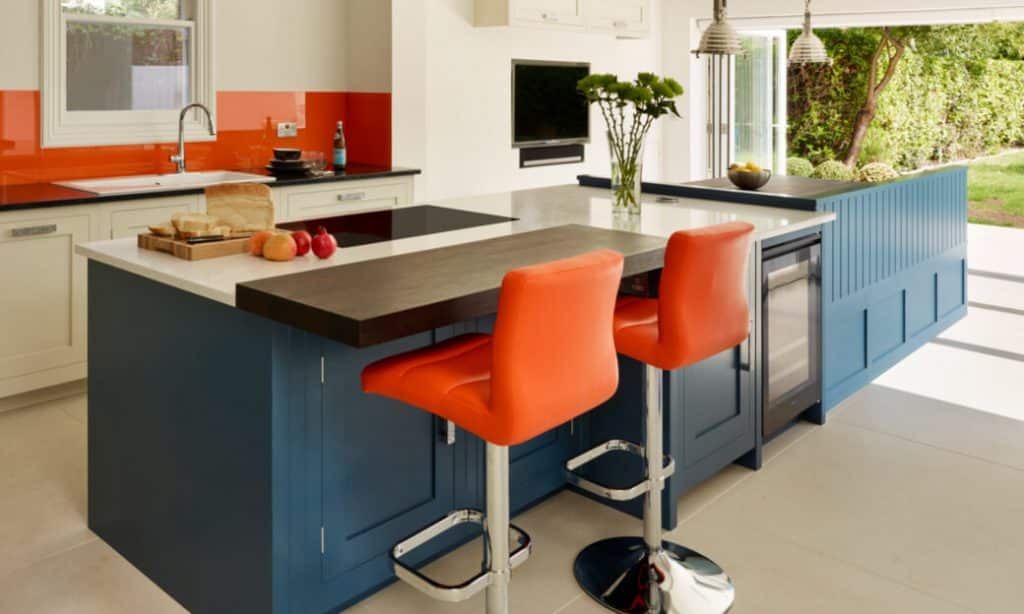
Is broken plan living the future?
As the potential pitfalls associated with open-plan living become more evident, there’s been a move towards a compromise known as broken-plan living. The idea is to retain all the things you love about open-plan – particularly the light and openness – while at the same time zoning the space to allow for more privacy should you need it. Rather than doing this with colours and textures as you would in a true open-plan arrangements, broken-plan employs structural elements such as half-walls, dividing shelves, changing levels, walls of glass and even mezzanines to delineate and formalize areas for different uses.
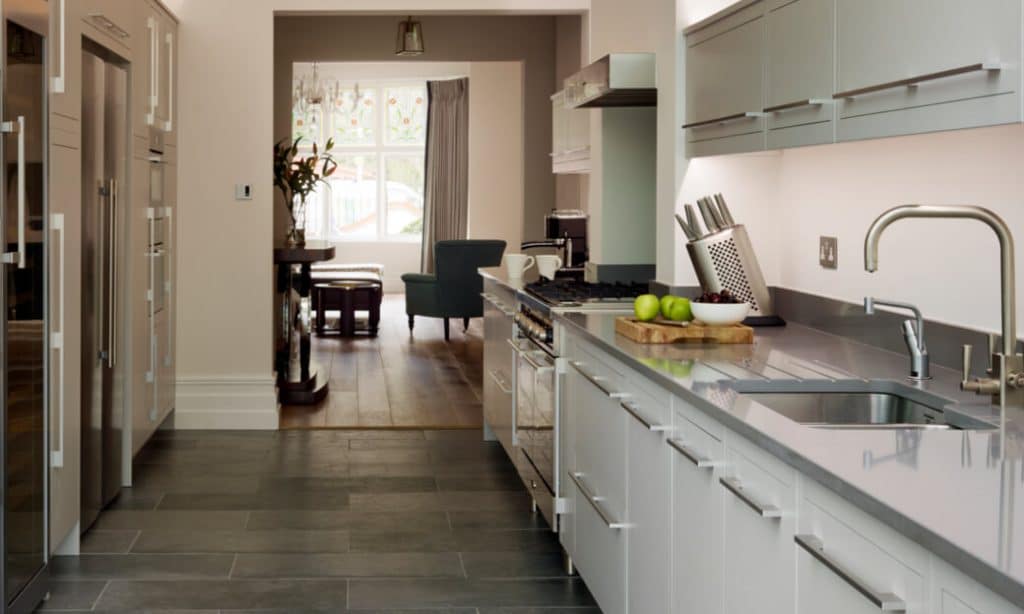
HOW TO MAKE IT WORK:
In its simplest form, you can create broken-plan living in an already open space by creating ‘walls’ using open boxed shelving units to define the space between a kitchen and chilling out area for instance. Of course, you don’t want to regress back to small poky rooms so don’t cram the shelves full of books – instead, artfully arrange a few favourite pieces to signal the change between one room and another and leave some of the shelves open to allow light to freely cascade from one zone to another. If you’re just starting your project then consider just knocking down half a wall and leaving the top open, allowing sight-lines through but at the same time giving you more wall space to play with. While hatches should remain a distinctly 70’s invention, a larger aperture in the wall between a kitchen and sitting room, for example, is a workable and modern substitute.
Alternatively, don’t knock completely out to the sides, instead leave a ‘block’ of wall at either side allowing you to station pieces of furniture against these walls to signal different uses clearly but subtly. Also consider building in pocket doors that will slide out of sight into the walls when you want to join two rooms but can be closed quickly to create separation when needed.
Recently, Crittall-style windows have come back into fashion. Metal framed windows and sometimes doors traditionally used in industrial spaces or as exterior walls onto gardens, they have celebrity fans such as TV presenter and architect George Clarke, who celebrates their ability to cleverly divide an internal space without shutting off one room totally from another.
When joining two rooms together, different levels will often be an issue but broken-plan schemes can actively embrace changing floor and ceiling heights.
A few steps from the kitchen to the dining area for instance can provide a clear physical divide as well as a mental one, allowing you to leave the kitchen behind to concentrate on enjoying your meal without fear of what the sink might hold.
Finally, for a bit of wow factor, why not consider adding a bespoke fireplace in the middle of a large room, which can be viewed from either side. It’s another inventive way to create that cosy, private atmosphere in an essentially open room.
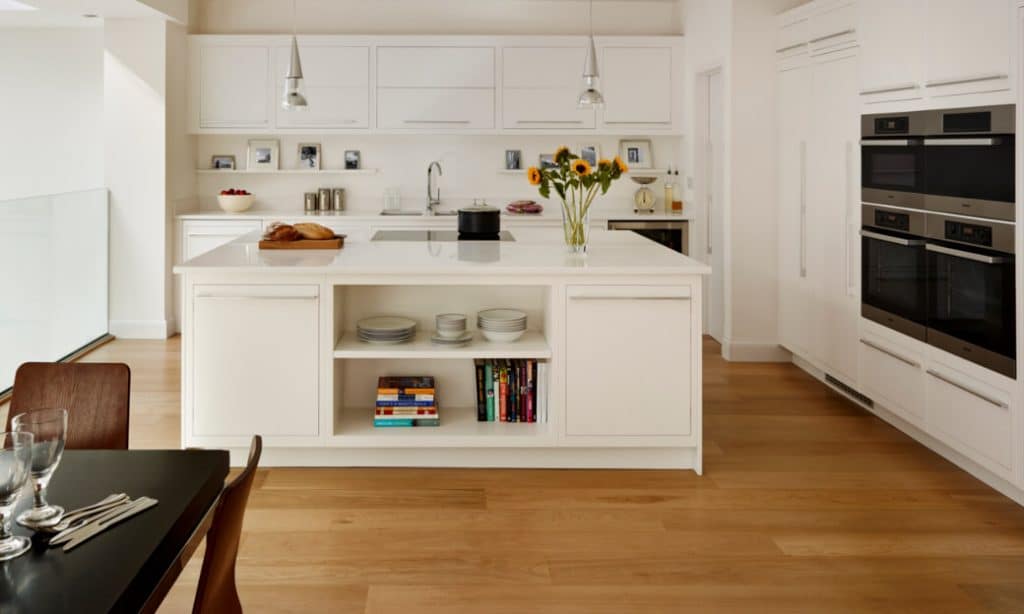
Engaging a kitchen designer as early in your project as possible is a wise move because an expert can bring knowledge to the planning and build process and work with your architect or builder to make adjustments that will make the kitchen space function just as you wish. Call 0800 389 6938 now to speak with a designer in your closest showroom, or click here to book your complimentary design consultation.




